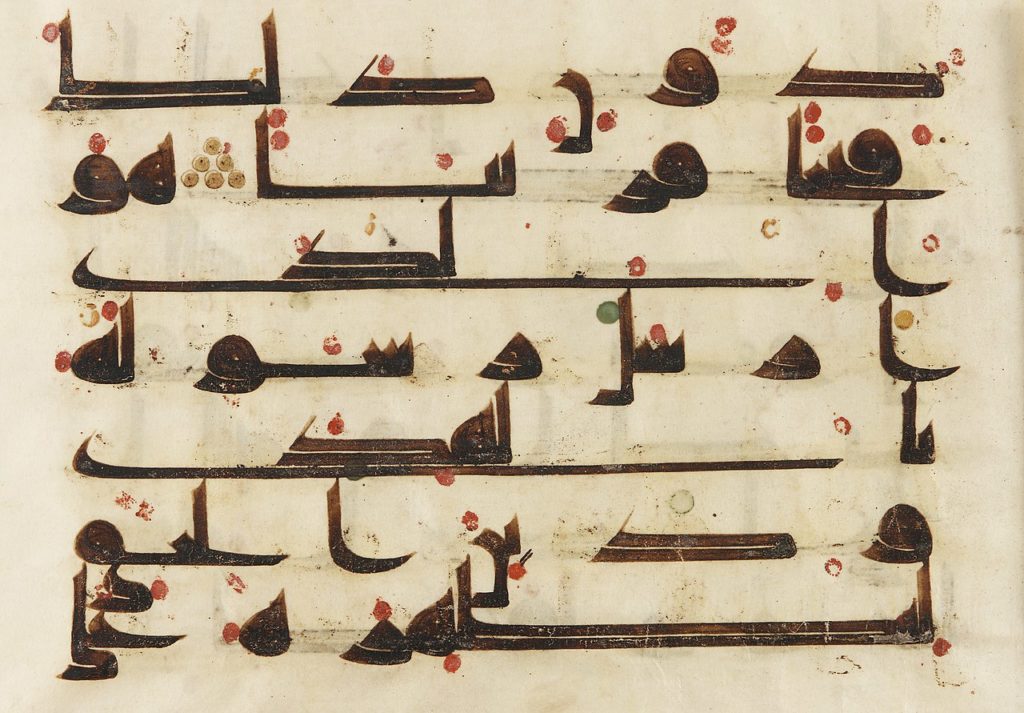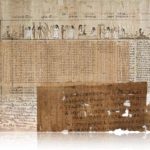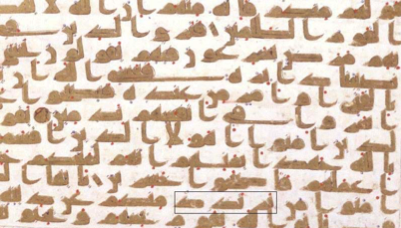
Many scholars consider the early history of Islam to be a ‘black hole.’ We know that the writing and recording of history relies mainly on physical artefacts (documents, manuscripts, coins, inscriptions and various material objects). The writing of history - history - does not rely on mere oral narratives that one narrator or other may set down according to his whim or for some specific purpose – even though these may help, but they are not held to be the single focus and support, simply because these lack reliable physical evidence to validate them.
BY JADOU JIBRIL
AND THEREIN LIES the dilemma of the early history of Islam, a history founded mainly upon oral narration, repetition, transmission and regurgitation. The prevailing narrative resulting from this path is yet to be subjected to any serious scrutiny or critical analysis by Muslims.
There is a paucity of reliable material traces dating back to the period of the birth of Islam. For Muslims oral narration still dominates the arena. They appear to be entirely satisfied with it. But they should seriously question this narrative, at least to remove and discard what has been proven to be invalid or trivial by means of mental and logical evaluation and inference, and via the technique of cross-referencing between what is mentioned in the inherited Islamic narrative sources, and the intersection between the authorities and sources assumed by Muslims with external (non-Islamic) references and sources that are ancient, contemporary, or close in time and space to the period of the emergence of Islam.
It is also useful to compare the text of the Qur’ān with the texts, documents and material traces that predate it. Yet it seems that all this is not on the table for the ‘temple guardians’ of the Islamic narrative and heritage, and there is no prospect that it will find its way onto their agenda, because they are satisfied enough with what they already have.
All that has been said about a copy of the ‘Uthmānī Qur’ān surviving is merely ‘smoke and ashes’
The problem of the scarcity of material artefacts is in itself troubling, and raises a number of questions and even gives cause for some doubt. This suspicion becomes all the more pressing whenever anyone uncovers a number of issues that are unspoken or absent in the early history of Islam according to the mainstream Islamic narrative, or comes across ideas and attitudes that have been deliberately and persistently excluded. Suspicions are also raised when it becomes clear that whenever anyone puts his hand on a material artefact or an ancient reference previously unknown, he becomes witness to matters that have been concealed in the prevailing Islamic narrative, especially those that confuse it or put paid to it entirely.
Justifying the scarcity of material effects
Many Muslim scholars argue that the absence or scarcity of material artefacts in the early periods of Islam’s emergence – especially written and recorded artefacts – are explained by the factor of time and the primitiveness of the materials that could preserve them, and their vulnerability to decay and extinction.
Today, however, we have documents written on primitive materials more fragile than those in which the texts of the Qur’an were written in its early days, materials dating back thousands of years before Muḥammad’s mission. In addition, a number of non-Islamic documents contemporary with the advent of Islam and predating it have been passed down, even if we have yet to confirm a document – of unimpeachable authenticity – that coincides with the time of the Muḥammadan mission or shortly thereafter. Some non-Islamic documents contemporary with the early history of Islam from areas not far from the Arabian Peninsula have been discovered, while not even a single copy of the ‘Imām Qur’ān’ (the ‘Uthmānī Qur’ān) has survived for us to avail ourselves of today.
All that has been said about a copy of it surviving is merely ‘smoke and ashes’, indeed something that is making Muslims a laughing-stock for their ignorance.[1] It has also been confirmed that what was said about the Qur’ān of al-Mashhad al-Husseini – that this was the copy that the caliph ‘Uthmān was holding the day of his assassination – was baseless.
Many of the written material traces of the Qur’ān have been deliberately and purposefully destroyed
It is certain, and in fact there is no doubt about this at all, that the decision to destroy and burn Qur’ān volumes and manuscripts leaves was made on more than one occasion in the early history of Islam for purposes declared or undeclared. Many of the written material traces of the Qur’ān have been deliberately and purposefully destroyed, as the Islamic narrative itself clearly acknowledges. In this case, we do not have any reliable material remains for the ‘original’ text of the Qur’ān that can be dated back to earliest period.[2]
No copy of the ‘Imām Qur’ān’ (the ‘Uthmānī Qur’ān) or part of it has been found to date, in spite of Islam’s wide spread to Spain and India at the end of the seventh century. In all of this geographical area, no copy or part of it has survived. This may seem strange to the historian given that he can peruse thousands of ancient documents associated with other religions, documents from time immemorial far older than those associated with the Qur’ān.
It cannot be denied – in any way – that the Arabs before Islam produced works of architecture, sculpture, engraving, ceramics and other manifestation of civilization and culture. Have all these works and manifestations disappeared without trace? Or have they been obliterated through ignorance as to their importance or destroyed by wars or other causes? Or did they not even exist at all in the Arabian peninsula?

Suggested Reading
The early history of Islam and the scarcity of material artefacts – 2
It is also a confirmed fact that the Arabs before Islam knew how to read and write, and knew how to make record – albeit to a limited extent – in the form of poetry, the Mu‘allaqāt, juridical rulings, covenants, treaties, but none of that has come down to us. A group of researchers have made the argument that the lack of written and recorded traces dating back to the pre-Islamic period or to its emergence may be the result of the ‘cultural rupture’ with what went before, whereby those charged with the affairs of the Muslims worked determinedly to consolidate Islam in the mind.
The proponents of this view have adduced a number of clues to this, including the incident of the Prophet Muḥammad with ‘Umar Ibn al-Khaṭṭāb, when the latter came to him one day with pages in his hand – said to be from the Jewish Mishna – which he had had copied from the People of the Book in order to increase his knowledge, but that this severely angered the Prophet.
There is also the case of Ibn Qurra, who brought a book to ‘Abdullah ibn Mas‘ūd, who ordered a vessel and water to be brought and proceeded to erase what was written. And there was the incident of ‘Umar Ibn al-Khaṭṭāb who once said:
“O people, it has been reported to me that books have appeared in your hands, let no one keep a book without first bringing it to me to get my opinion on it”. And when they brought them to him, he burned them.
[1] Nothing has been proven so far about the whereabouts of a copy of the ‘Uthmānī Qur’ān, nor about the authenticity of some museums’ claims to possess some ‘Uthmānī Qur’āns or even ‘Uthmān’s personal copy the ‘Imām Qur’ān’. As for the ancient Qur’ān held in libraries and antiquities in Egypt said to be ‘Uthmānī Qur’ans, this is quite untrue, because they contain trimmings and inscriptions placed as separator marks for the sūras, and for showing the ‘tenths’ of the Qur’ān, while it is known that the ‘Uthmānī Qur’ans were devoid of all this, and even of diacritical dots and vowel signs as well. It is true that the Qur’ān preserved in the treasury of antiquities in the Husseini Mosque and attributed to ‘Uthmān is written in the old Kufic script, with its extended letters and bulky volume, and a spelling corresponding to the spelling styles of the Madinese or Levantine Qur’ans, where the phrase: ‘he who apostatizes’ from sūrat al-Mā’ida is spelled man yartadid with two separated ‘ds’ instead of man yartadd with the ‘ds’ elided together. But researchers tend to rule this out since it is impossible today to find a complete Qur’ān written in the first or second century AH, and they are generally not entirely free of the symbols that were introduced at a later time.
[2] The oldest thing we have today are the ‘San‘ā Manuscripts’, most of which are still hidden from view by order of the the Yemeni authorities, although some of them are in the possession of the Inara Group in Germany and still inaccessible due to their being the possession of an individual.
[3] “‘Umar ibn al-Khaṭṭāb (may Allah be pleased with him) came to the Prophet (blessings and peace of Allah be upon him) with some written material he had got from one of the people of the Book. He read it to the Prophet (blessings and peace of Allah be upon him), and he got angry and said: “Are you confused (about your religion), O son of al-Khaṭṭāb? By the One in Whose hand is my soul, I have brought it (the message of Islam) to you clear and pure. Do not ask them about anything, lest they tell you something true and you disbelieve it, or they tell you something false and you believe it. By the One in Whose hand is my soul, if Moses were alive, he would have no option but to follow me.” (Musnad Aḥmad vol. 3, p. 387).
[4] According to the Islamic narrative, ‘Umar forbade people to take any book along with the Book of Allah, and used to strongly reprimand anyone who copied the Book of Daniel and beat them saying: “Go and erase it. Do not read it and do not recite it to any of the people, for if I receive any report that you read it or recited it to any of the people I will punish you”. He then addressed the people, saying: “O people, it has been reported to me that books have appeared in your hands. The books most dear to God are those which are the most just and upright. Let no one keep a book without first bringing it to me to get my opinion on it”. They thought that he wanted to look at it and make any amendments so that there should arise no differences. So they brought their books, but he burned them with fire, saying: “A demand like the demand of the People of the Book.” He also wrote to the provinces: “Anyone who has any of these is to erase them”.
Main image: Folio from a Qur’ān in Kufic script on parchment, 8th-9th century AD. (Part of the sūrat al-Fatḥ, verses 27-28: دُونِ ذَٰلِكَ فَتْحًا قَرِيبًا هُوَ الَّذِي أَرْسَلَ رَسُولَهُ بِالْهُدَىٰ وَدِينِ الْحَقِّ لِيُظْهِرَهُ عَلَى … a near victory beforehand, He it is Who sent His Messenger with the guidance and the true religion that He may make it prevail over …)


